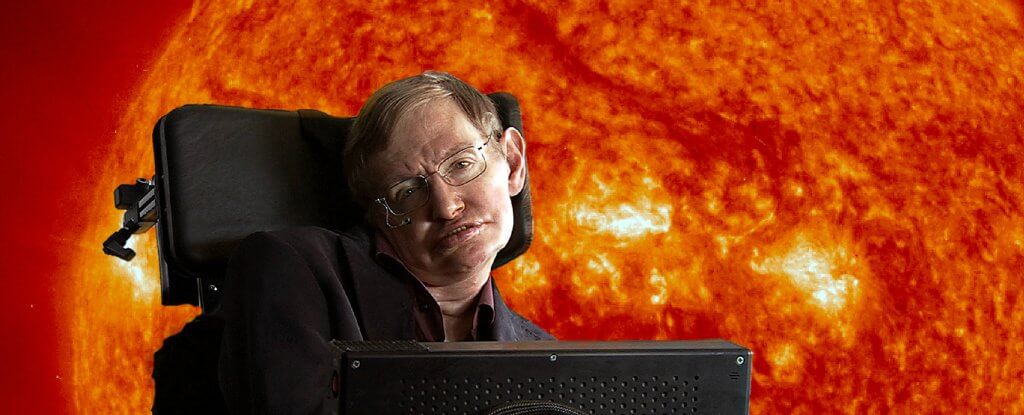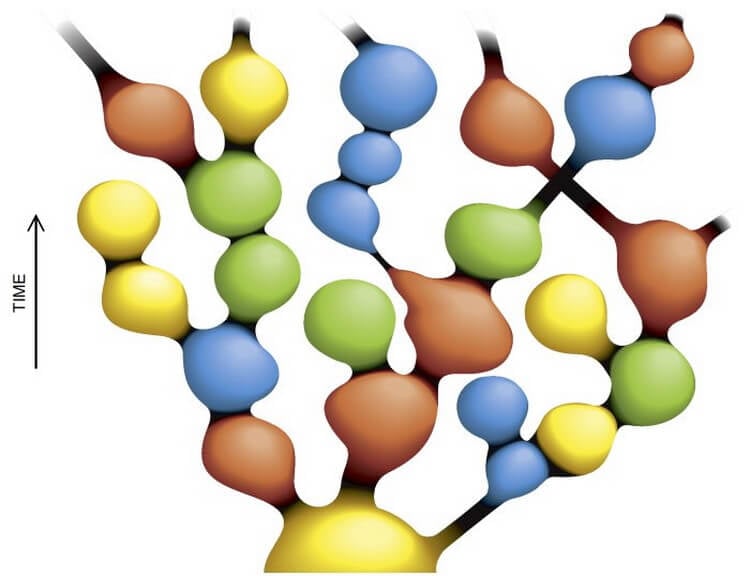
Before an outstanding physicist of our time Stephen Hawking has left this world, he had to leave his last scientific work — his latest theory about the nature of the Universe, which he co-wrote with his Belgian counterpart Thomas Hertogdom from the Catholic University of Louvain. The work was finally published in the scientific journal journal of High Energy Physics, and in more detail it can be found in the online library arXiv.org.
Thomas Hertog, which was co-written with Hawking, said that their goal was “to turn the idea of the multiverse in check the scientific basis”. Published in the journal of High Energy Physics, the submission States that the universe is much less complex than is assumed by current theories of the multiverse.
The work is based around the concept of eternal inflation Universe, first introduced in 1979 and published in 1981.
After the Big Bang, the universe experienced a period of exponential inflation (rapid expansion). Then the expansion slowed, and the energy of the Universe entered into matter and cosmic radiation. However, according to the theory of eternal inflation, the Universe remained bubbles of space, which completely ceased to expand or headed for a complete shutdown of this extension, thereby forming a fractal stubs static space. At the same time in different spatial bubbles due to quantum effects inflation has not stopped, which in turn led to the formation of an infinite number of multiverse theory. According to the theory, everything we see within the observable Universe, concluded only in one of these bubbles. In this inflation stopped, which has given birth to stars and galaxies.

Visualization of an expanding multiverse
“The usual theory of eternal inflation predicts that in the overall scale of our universe is like an infinite fractal, with a mosaic of different pocket universes, separated by a widening ocean,” explains Hawking.
“Local laws of physics and chemistry may vary from one pocket universe to another, together forming a multiverse. However, I was never a fan of the multiverse theory. If the scale is different universes within the multiverse are too huge or even infinite, then the theory cannot be checked.”
In recent years, the model of eternal inflation the Universe was subjected to serious criticism. For example, Paul Steinhardt, a physicist at Princeton University, made a statement that originally the theory assumed a universal challenge to explain what we observe in the Universe, just changed the model.
In the new work, Hawking and Hertog say that the model of eternal inflation is incorrect, because the laws of the General theory of relativity break down at the quantum level, becoming useless.
“The problem with the usual model of eternal inflation is that it presupposes the existence of a background of the universe, which evolyutsioniruet in accordance with the General theory of relativity, and considers quantum effects as only minor fluctuations,” explains Hartog.
“However, the dynamics of eternal inflation erases the division between classical and quantum physics. As a consequence, Einstein’s theory breaks down in eternal inflation”.
The new theory takes the basis of string theory – one of the models that tries to link General relativity with quantum theory, replacing the smallest particles from the particle physics of tiny vibrating one-dimensional strings.
According to the holographic principle in string theory, space can be described by its boundaries. In other words, in some sense, our universe is like the hologram which is physically real three-dimensional space can be mathematically reduced to a 2D projection on its surface.
Scientists have proposed a variation of the holographic principle, which projects the temporal dimension is infinite inflation, which allows to describe the overall concept without having to rely on the General theory of relativity. This in turn allowed the researchers to mathematically reduce the infinite to the infinite inflation condition on the spatial surface of the Universe is an infinite hologram of inflation.
“When we tracked the evolution of our Universe back in time, at some point, we have reached the threshold of eternal inflation, where our familiar concept of time ceases to have any value,” notes Hertog.
In 1983 Hawking with physicist James Chartlon proposed the concept of infinite Universe theory. In it, the researchers talked about the fact that at the time of the Big Bang the Universe was only space but didn’t have time and borders. The concept of Hawking and Hartl admitted the existence of parallel worlds that are defined with a single wave function. This diversity of universes observable human reality is only one of possible.
According to the new theory, the early universe had boundaries, and that has allowed Hawking and Hertog to obtain more reliable predictions about its structure.
“We predict that our universe in General the scale is quite smooth and has a border. It is not a fractal structure,” said Hawking.
Obtained as a result of this work, the findings do not refute the idea of the multiverse theory, however, reduce them to a much smaller range. In other words, the theory of the multiverse in the future it will be possible to check if, of course, the conclusions of Hawking and Hertog will be able to repeat and confirm other physicists.
Hertog would like to check out their Hawking insights through the observation of gravitational waves that could be created is endless inflation. These waves are too huge in order to be identified using the LIGO interferometer, but future gravitational wave interferometers such as LISA ground, as well as follow-up observations of background cosmic radiation could identify, said the researcher.
Published the latest work of Stephen Hawking about the nature of our Universe
Nikolai Khizhnyak